Butterfly stroke’s beauty and power may scare beginners. You can perfect this gorgeous stroke with guided practice and persistence. Butterfly swimming is difficult, however this article provides basic methods and success tips. When broken down, this challenging yet rewarding stroke with its simultaneous arm pull, leg kick, and brief gliding phase is easy to understand. Mastering the butterfly stroke enhances fitness and swimming performance but requires strength, coordination, and flexibility.
This guide lets beginners learn at their own pace and makes learning enjoyable and easy with clear instructions, flawless form, and a step-by-step method. The complete guide from Swim Time Log will teach butterfly stroke for beginners in swimming mechanics, drills, and safety for a fun and satisfying experience.
Learning the Fundamentals of Butterfly Stroke for Beginners
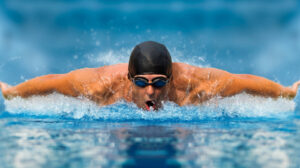
Butterfly Stroke for Beginners
The butterfly stroke can be broken down into four main phases. For beginners, focusing on the essential components of each phase can make the technique more manageable.
Dolphin kick
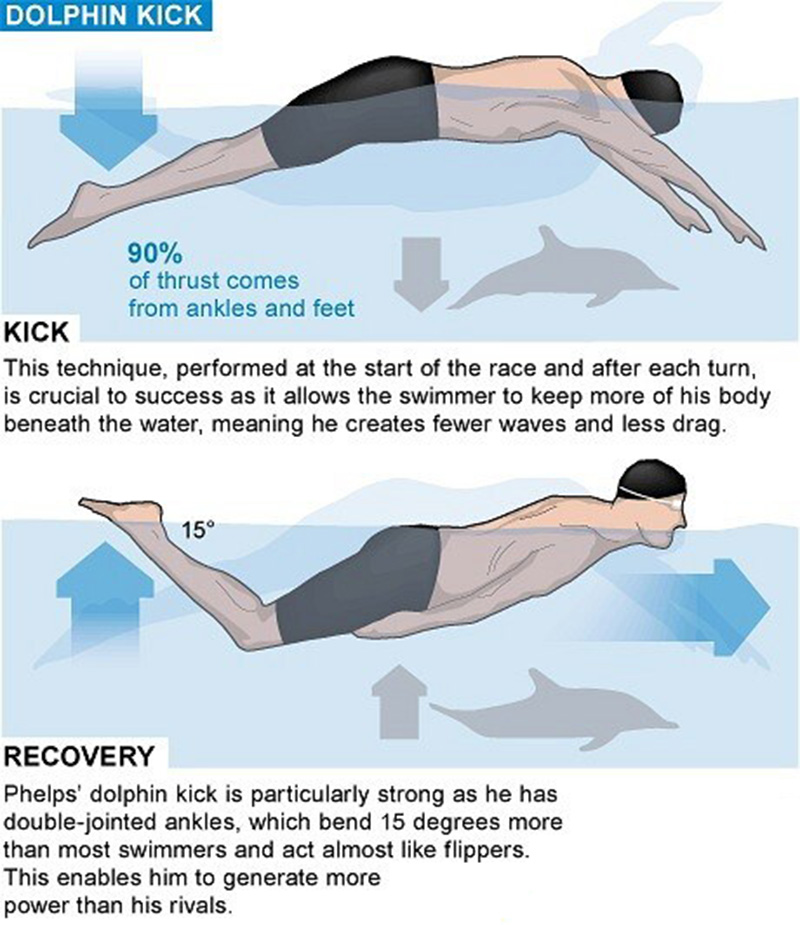
Michael Phelps Dolphin Kick Analysis
- Body position: Keep your body streamlined with your head aligned with your spine and your hips slightly elevated.
- Leg movement: Initiate the kick from your hips and push your heels down and back, keeping your legs straight and together. Focus on generating power from your hips and thighs, not just your calves. Keep your ankles relaxed and your toes pointed.
- Timing: Coordinate your dolphin kick with your arm movements, starting the kick as your arms reach the top of the stroke and completing it as your arms begin to pull downward.
Arm pull
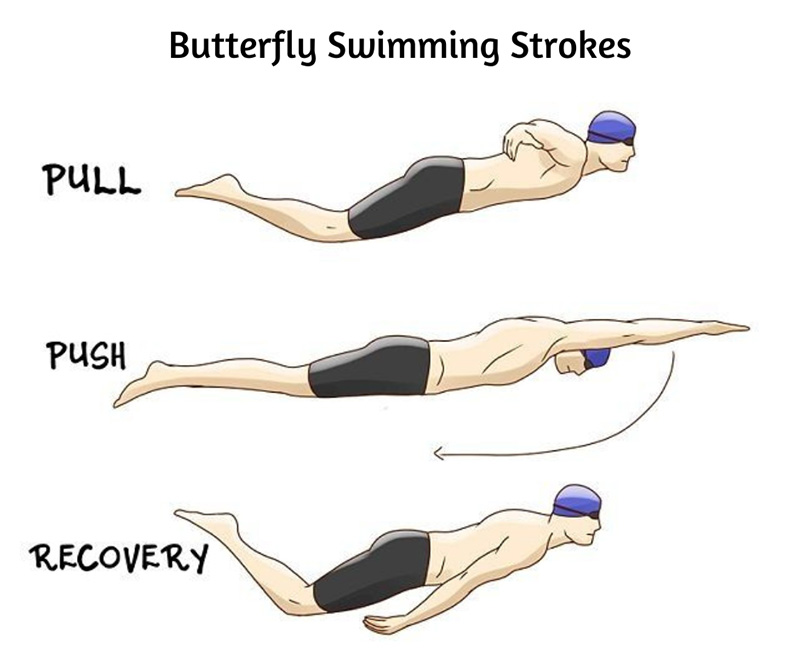
Butterfly Stroke Arm Pull
- Starting position: Start with your arms extended overhead, palms facing each other.
- Downward sweep: Sweep your arms down and forward, keeping your elbows high and your wrists relaxed.
- Inward pull: Pull your hands inward towards your chest, keeping your elbows bent at a 90-degree angle.
- Recovery: Recover your arms over the water, keeping them close to the surface and your fingers together.
- Timing: Coordinate your arm pull with your dolphin kick, starting the pull as you complete the kick and finishing the pull as you initiate the next kick.
Breathing
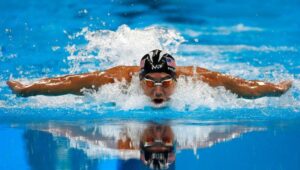
Knowing When to Breath is Also Important
- Quick intake: Lift your head just enough to take a quick breath as your arms start to recover over the water.
- Timing: Coordinate your breathing with your arm movements, lifting your head as your arms reach the top of the stroke and submerging it as they begin to pull downward.
- Submerge immediately: Submerge your head immediately after breathing, keeping your chin tucked and your eyes focused
Essential drills and exercises to build skills for Butterfly Stroke
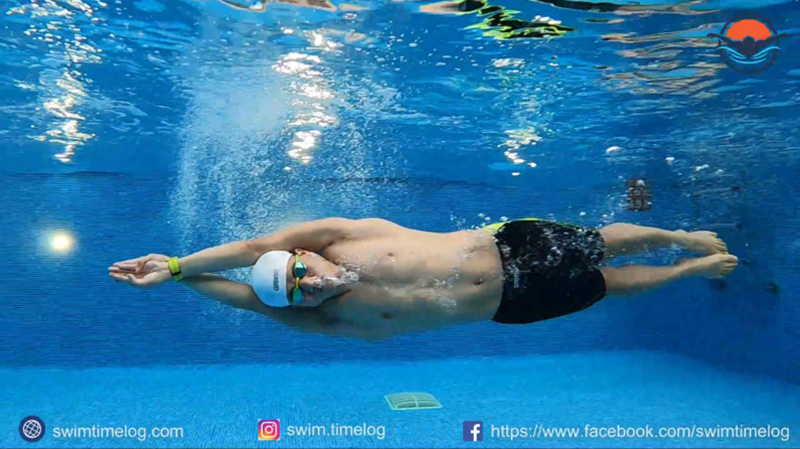
You Still Need Other Exercises to Perform Butterfly Stroke Well
Several drills and exercises can help beginners develop the strength, coordination, and flexibility needed for butterfly swimming:
- Arm band drills: Use arm bands to isolate the arm pull and focus on proper technique.
- Board kick drills: Hold onto a pool kickboard and practice dolphin kicks with your arms extended overhead.
- Single-arm butterfly drills: Practice butterfly swimming with only one arm at a time to improve balance and coordination.
- Dryland exercises: Incorporate exercises that target the muscles involved in butterfly swimming, such as shoulder presses, rows, and planks.
Common mistakes and how to avoid them
Here are some common mistakes beginners make in butterfly swimming and how to avoid them:
- Breathing too late or too early: Coordinate your breathing with your arm movements to maintain a streamlined position and avoid disrupting your rhythm.
- Keeping your head up too long: Submerge your head quickly after taking a breath to maintain a streamlined position and reduce drag.
- Dropping your hips: Keep your hips slightly elevated to allow for a powerful dolphin kick.
- Bending your knees too much: Keep your legs straight and together during the dolphin kick to generate maximum power.
- Overexerting yourself: Start slowly and gradually increase your distance and speed to avoid fatigue and injury.
Conclusion
Mastering butterfly swimming requires dedication, practice, and proper technique. By following the guidelines in this article, you can embark on a rewarding journey of learning this elegant and challenging stroke. Remember to start slowly, focus on proper form, and seek guidance when needed. With perseverance, you will soon be gliding through the water with the grace and power of a butterfly.
Read more:
- Mastering the Art of Butterfly Breaststroke Swimming
- Refining Front Crawl with the Butterfly Swim Style
- Improving Front Crawl In Butterfly Stroke Techniques
AUTHOR
Sang Nguyen
Sang Nguyen is a former national swimmer for Vietnam who has transitioned into coaching. With a passion for fostering a healthy swimming community and connecting like-minded individuals,......Read More
BLOG
Maybe You Are Interested
Butterfly Arm Stroke Movement
The butterfly stroke, with its captivating undulations and powerful movements, requires a refined butterfly arm...
2 Butterfly Kick Swimming Drills: Building Power from the Core
The butterfly stroke, known for its powerful undulations and graceful movements, relies heavily on a...
5 Ways to Improve Your Butterfly Swim Technique
The butterfly stroke, also known as the fly swimming technique, is a captivating display of...
8 Butterfly Stroke Tips to Help You Improve Your Skill
The butterfly stroke, also known as the butterfly swim, is undeniably one of the most...
Discover Information About Butterfly Stroke: From History to Technique and Benefits
The butterfly stroke, also known as butterfly swim or fly swim stroke, is one of...
Competitive Swimmer Diet in Olympics: Fueling Your Gold Medal Dreams
Competitive swimmers push their bodies to the limit, demanding a competitive swimmer diet that provides...